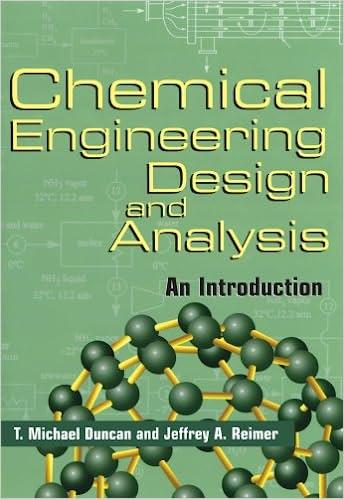Answered step by step
Verified Expert Solution
Question
1 Approved Answer
PROBLEM 2 ( 7 0 POINTS ) The Hampson - Linde cycle is the key step in most gas liquefaction processes, invented by William Hampson
PROBLEM POINTS
The HampsonLinde cycle is the key step in most gas liquefaction processes, invented by William Hampson and Carl von Linde in The cycle uses successive pressurization and expansion through a JouleThomson orifice essentially a throttling valve to achieve cooling until the gas is cold enough to condense. In this problem, we will study a simplified version of the process.
Argon gas at and bar in a steady flow of is first compressed isothermally to bar, and then passed through a throttling valve until the pressure goes back to bar. The throttling valve can be assumed to be adiabatic.
a If we treat argon as an ideal gas, what would be the final temperature after passing through the valve points
b The ideal gas assumption does not work in our case, because it fails to produce the cooling effect when a real gas is passed through a valve called the JouleThomson effect Instead of using the ideal gas assumption, we will use the Pitzer B correlation for argon:
where:
Here, is the reduced temperature and is the reduced pressure. Note that for argon, the acentric factor so we can leave out the term. The critical temperature is and the critical pressure is bar.
For this equation of state, derive expressions for and The expressions should be in terms of constants including and and only points
c Assuming the compression step is reversible, calculate the heat rate and the shaft power of the compressor points
d Calculate the final temperature of the argon gas after passing through the valve. For argon gas at bar, and can be assumed to be independent of temperature points
e Using residual properties, verify that the molar enthalpy change of the argon gas across the throttling valve is approximately zero points
Note: In the real HampsonLinde process, the isothermal compression is often achieved by a real compressor which is far from isothermal and cooling with the cold product stream using a heat exchanger. One step is usually not enough to liquefy the gas, so the process is repeated.

Step by Step Solution
There are 3 Steps involved in it
Step: 1

Get Instant Access to Expert-Tailored Solutions
See step-by-step solutions with expert insights and AI powered tools for academic success
Step: 2

Step: 3

Ace Your Homework with AI
Get the answers you need in no time with our AI-driven, step-by-step assistance
Get Started


